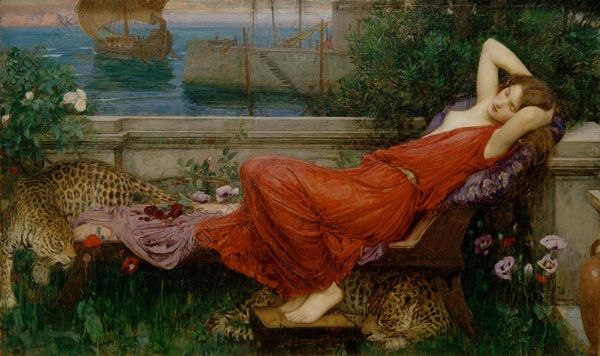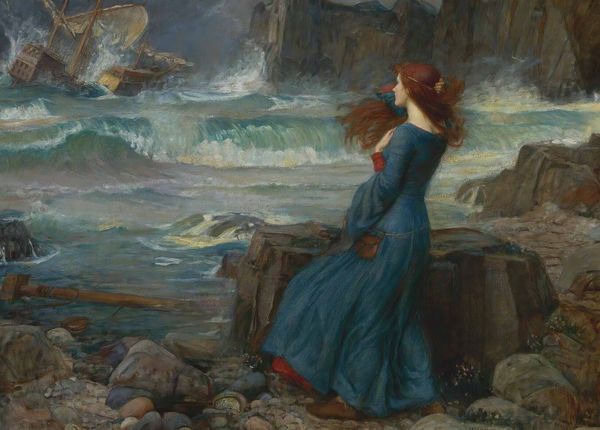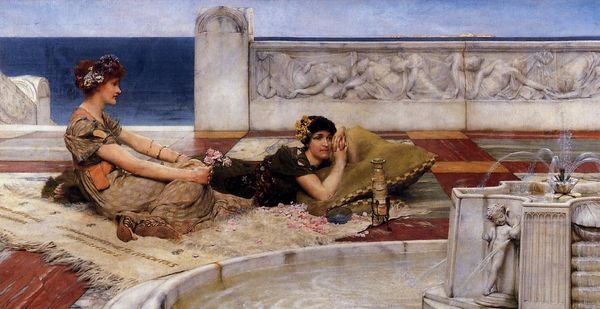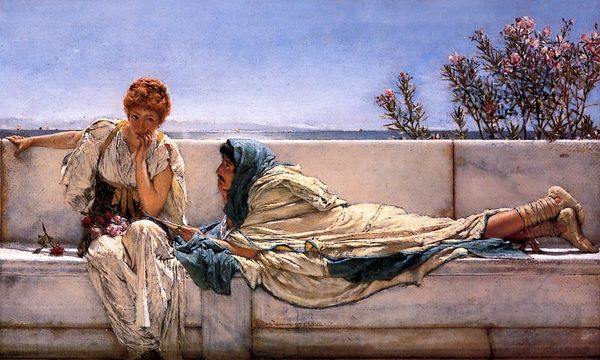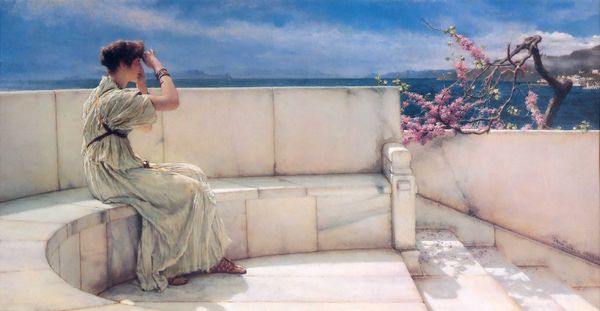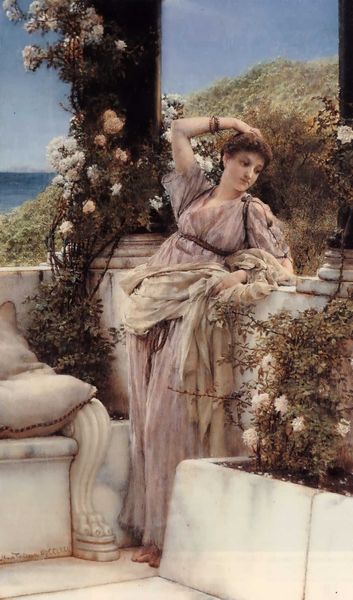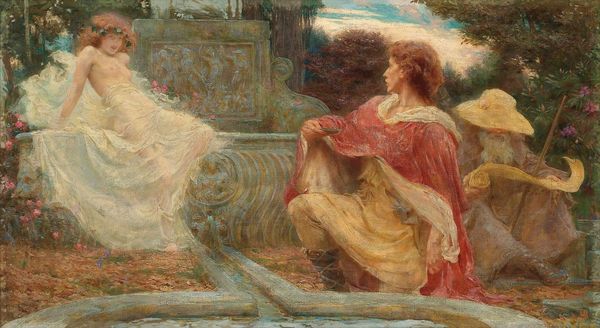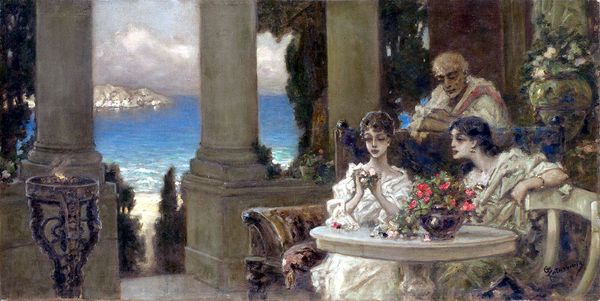
painting, plein-air, oil-paint
#
painting
#
plein-air
#
oil-paint
#
landscape
#
classical-realism
#
oil painting
#
history-painting
#
academic-art
#
realism
Copyright: Public domain
Curator: Here we have Lawrence Alma-Tadema's "Hero," painted in 1898. It presents a woman standing on a balcony overlooking the sea, rendered in oil. Editor: It’s instantly evocative. The muted palette creates a somber, almost melancholy atmosphere. The textures, though—the smooth stone against the rough sea—that’s where the visual tension resides, doesn’t it? Curator: The symbolism is incredibly potent. The setting immediately conjures the tragic tale of Hero and Leander. She, a priestess of Aphrodite, he, her lover who drowned swimming the Hellespont to see her. The red cloth she clutches could represent love or even the blood lost, with a premonition about what's about to happen. Editor: Precisely. Note the compositional strategy; the architecture is so meticulously rendered—a perfect classical structure that rigidly contains this deeply emotional scene, almost amplifying it. And then there's her gaze—directed beyond the pictorial space. What expectations are at play here? Curator: It's a window into the artist’s fascination with classical antiquity and with portraying women burdened by fate or passion, like the mythological women and female martyrs that fill Western culture. There’s this weight of destiny we inherit as humans, you know? Love and its costs… It becomes embodied through that recurring archetype, that repeated female figure from culture past. Editor: Alma-Tadema's work often functioned as a kind of visual archive. We see it both in subject matter but the oil allows the depiction of precise detail that reinforces the sense of historical fidelity, no? Each ripple in the water, each fold in her gown—contributing to that air of tragic realism. Curator: Alma-Tadema reminds us of the endurance of myths and legends, reflecting enduring themes across generations. Even as fashions shift, what we repeat says more than the superficial differences between us. Editor: Yes, an emotional snapshot. Though on the surface it celebrates classicism and order, ultimately its effectiveness comes down to its visual representation of love, loss, and premonition.
Comments
No comments
Be the first to comment and join the conversation on the ultimate creative platform.


